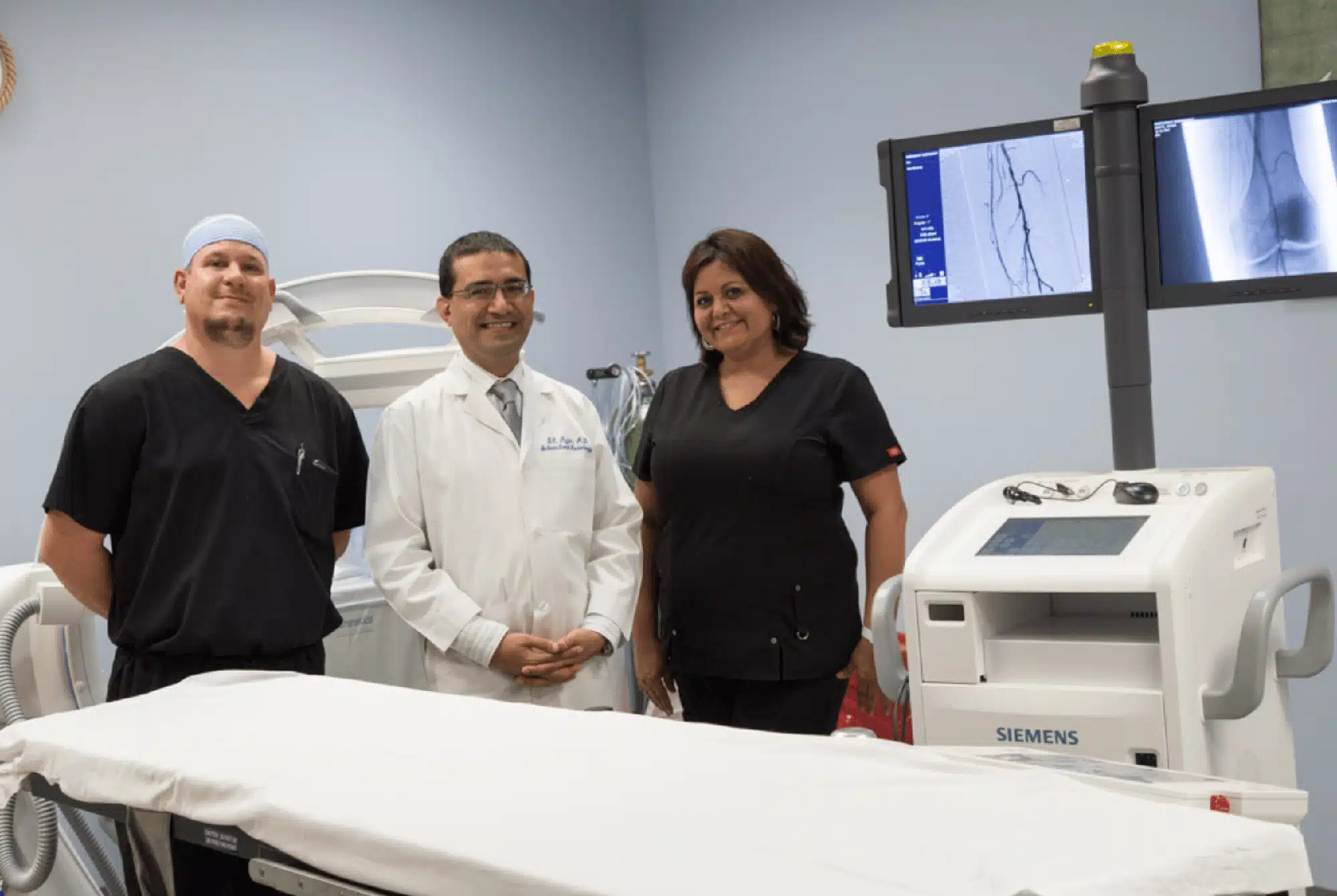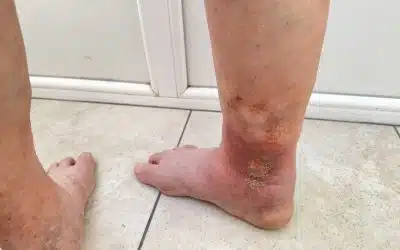Healing Arterial Ulcers
Understanding Arterial Ulcers
Arterial ulcers, often referred to as ischemic ulcers, are a serious health concern that manifests as open wounds primarily due to inadequate blood supply to the lower extremities. These wounds are not just discomforting; they are indicative of a significant vascular disorder, Peripheral Arterial Disease (PAD), which can lead to severe complications if left unchecked.
Coastal Vascular Center prioritizes a comprehensive approach to understanding, diagnosing, and effectively treating arterial ulcers. This detailed guide delves into the symptoms, risk factors, and sophisticated treatment options available for managing this condition. Our goal is to give you essential information to understand the severity of arterial ulcers and the critical nature of timely medical intervention.
What Are Arterial Ulcers?
Arterial ulcers, or ischemic ulcers, are painful open wounds that typically develop on the lower extremities due to poor blood flow caused by narrowed or blocked arteries. These ulcers directly result from Peripheral Arterial Disease (PAD), where compromised blood circulation prevents oxygen and essential nutrients from reaching the affected tissues. The tissue may become damaged without an adequate blood supply, forming arterial ulcers.
Unlike other types of ulcers, arterial ulcers often present as well-defined, round wounds with a punched-out appearance. They are commonly found on weight-bearing areas such as the toes, heels, or regions with physical pressure, but they can also occur on the ankles or lower legs. Because these ulcers are caused by insufficient circulation, the surrounding skin may appear cool to the touch, pale, or bluish, and the wounds themselves may heal slowly, or not at all, without medical intervention.
Arterial ulcers are frequently accompanied by other symptoms of PAD, including leg pain, cramping, or Rest Pain (pain that occurs even when at rest). Left untreated, these ulcers can worsen over time, increasing the risk for infections, further complications, and even tissue loss, such as gangrene.
If you suspect an arterial ulcer, it’s crucial to seek medical care immediately. Early diagnosis and treatment can help prevent the progression of PAD and its associated complications, providing an opportunity for successful wound healing and overall improvement in vascular health. At Coastal Vascular Center, our expert team is dedicated to addressing conditions like arterial ulcers with advanced diagnostic techniques and personalized care plans tailored to each patient’s needs.
Causes of Arterial Ulcers
Arterial ulcers, a severe and painful manifestation of vascular disease, arise from a complex interplay of factors that disrupt normal blood circulation. Understanding these ulcers’ root causes is pivotal in preventing their onset and addressing the underlying condition effectively. The primary cause of arterial ulcers is inadequate blood flow to the tissues, often a consequence of Peripheral Arterial Disease (PAD). Here’s a closer look at the various factors contributing to this condition:
Atherosclerosis
The most common underlying cause of PAD and, by extension, arterial ulcers, is atherosclerosis. This condition involves the accumulation of plaque—a mixture of fat, cholesterol, and other substances—on the walls of arteries, causing them to narrow and harden. As the arteries become more restricted, blood flow to extremities, such as the legs and feet, diminishes, increasing the risk of ulcer formation.
Hypertension and Diabetes
Both hypertension (high blood pressure) and diabetes are significant risk factors for the development of arterial ulcers. Hypertension can damage blood vessels over time, while diabetes, particularly when uncontrolled, can lead to poor circulation and nerve damage. These conditions exacerbate the effects of atherosclerosis, further limiting blood flow.
Smoking and Other Lifestyle Factors
Smoking is a major risk factor for arterial ulcers due to its adverse effects on blood circulation and artery health. Nicotine causes arteries to constrict, while the chemicals in cigarette smoke can damage the lining of the arteries, accelerating atherosclerosis. Obesity and a sedentary lifestyle also contribute to the development of arterial ulcers by increasing the risk of hypertension, diabetes, and atherosclerosis.
Trauma and Injury
In individuals with compromised circulation, minor injuries or trauma to the legs or feet can escalate into arterial ulcers. The diminished blood flow hampers the body’s natural healing process, preventing wounds from healing appropriately and leading to ulcer formation.
Age and Genetic Factors
Increasing age is associated with a higher risk of atherosclerosis and PAD. Additionally, genetics can play a role; individuals with a family history of vascular disease may be more prone to developing arterial ulcers.
Addressing the causes of arterial ulcers requires a multifaceted approach, focusing on improving blood circulation, managing underlying conditions such as diabetes and hypertension, and adopting healthier lifestyle choices to mitigate risk factors. At Coastal Vascular Center, our specialized care team offers tailored treatment plans to tackle the root causes of arterial ulcers, prioritizing patient outcomes and quality of life.
Risk Factors for Arterial Ulcers
Arterial ulcers are complex conditions with multiple contributing factors. While the direct cause of these ulcers is inadequate blood flow due to peripheral arterial disease (PAD), several risk factors increase the likelihood of their development. Recognizing these risk factors is crucial for prevention and early intervention. Here are the key risk factors associated with arterial ulcers:
Smoking
The consumption of tobacco products is one of the most significant risk factors for arterial ulcers. Smoking damages the blood vessels, leading to decreased blood flow and an increased risk of plaque buildup in the arteries (atherosclerosis), directly contributing to the development of PAD and subsequent arterial ulcers.
Diabetes
Individuals with diabetes are at a higher risk of developing arterial ulcers due to the disease’s impact on blood circulation and nerve function. High blood sugar levels can damage blood vessels over time, reducing blood flow to the limbs and impairing wound healing. Diabetes also increases the likelihood of nerve damage (neuropathy), making individuals less aware of injuries and infections that could lead to ulcers.
Hypertension (High Blood Pressure)
Hypertension can cause harm to arteries and is a known factor in the progression of atherosclerosis, thereby indirectly increasing the risk of arterial ulcers by reducing blood flow to the extremities.
High Cholesterol
Elevated levels of cholesterol contribute to the buildup of fatty deposits in the arteries, narrowing them and limiting blood flow to various parts of the body, including the legs and feet. This condition, known as atherosclerosis, is a direct contributor to the risk of developing arterial ulcers.
Age
The risk of arterial ulcers increases with age, particularly in individuals over 60. Aging is associated with a natural decline in the efficiency of the vascular system, including the arteries, which can exacerbate the effects of other risk factors for arterial ulcers.
Sedentary Lifestyle
A lack of physical activity can contribute to several conditions, such as obesity, diabetes, and hypertension, that are risk factors for arterial ulcers. Regular exercise can improve blood flow and overall vascular health, reducing the risk of ulcers.
Family History and Genetics
A family history of vascular disease, including PAD, can increase an individual’s susceptibility to arterial ulcers. Genetic predispositions play a role in the development of many conditions associated with arterial ulcers.
Understanding and mitigating these risk factors through lifestyle changes and medical intervention is essential in the prevention of arterial ulcers. Incorporating regular exercise, maintaining a healthy diet, quitting smoking, and managing existing health conditions like diabetes and hypertension are critical steps in reducing the risk. At Coastal Vascular Center, our team is dedicated to providing personalized care and education to help patients navigate these risk factors, aiming to prevent the occurrence of arterial ulcers and improve overall vascular health.
Understanding Arterial Ulcers
Arterial ulcers are painful wounds that develop due to poor blood flow, commonly caused by Peripheral Arterial Disease (PAD). These ulcers typically form on the lower legs, feet, or toes when an insufficient blood supply deprives tissues of oxygen and nutrients, leading to tissue breakdown. Left untreated, arterial ulcers can worsen, resulting in critical complications like gangrene or amputation. At Coastal Vascular Center, we specialize in diagnosing and treating arterial ulcers to alleviate pain and restore your quality of life.
If you have a question or can’t find what you need for peripheral arterial disease online, call us at 713-999-6056. Coastal Vascular Center is always happy to answer your questions.
What are arterial ulcers?
Arterial ulcers are open wounds or sores that occur due to a lack of blood flow to the extremities. These ulcers typically develop on areas with poor circulation, such as the legs, feet, ankles, or toes. Unlike other types of ulcers, arterial ulcers are caused by insufficient oxygen and nutrients needed to support tissue repair.
What causes arterial ulcers?
Arterial ulcers are most commonly caused by Peripheral Arterial Disease (PAD), where blocked or narrowed arteries reduce blood flow to the legs and feet. Additional causes and risk factors include:
- Smoking
- Diabetes
- High blood pressure
- High cholesterol
- Atherosclerosis (plaque buildup in arteries)
When the blood supply becomes critically low, the surrounding tissues can die, leading to the development of ulcers.
What are the symptoms of arterial ulcers?
Symptoms of arterial ulcers include:
- Painful wounds, especially during rest or at night.
- Open sores with a punched-out appearance and well-defined edges.
- Smooth, shiny, discolored, or thin skin around the ulcer.
- Cold or pale skin due to poor circulation.
- Slow or non-healing wounds.
- In severe cases, signs of gangrene may develop.
Are arterial ulcers dangerous?
Yes, arterial ulcers are serious and can lead to severe complications if untreated. These include:
- Infections that can spread to tissues or bones.
- Gangrene, leading to potential amputation of the affected limb.
- Increased risk of heart attack or stroke, as PAD often signals
- atherosclerosis in other blood vessels.
Prompt treatment can prevent these outcomes and promote healing.
How can I prevent arterial ulcers?
Prevention begins with managing the root causes of poor blood flow and PAD:
- Quit smoking to improve circulation.
- Maintain a healthy diet and control cholesterol.
- Exercise regularly to promote arterial health.
- Keep diabetes and blood pressure under control.
Regular checkups at Coastal Vascular Center can help monitor your vascular health and prevent ulcers from developing.
Treatment for Arterial Ulcers
At Coastal Vascular Center, we understand the necessity of treating the root cause—poor arterial blood supply. Without addressing it, ulcers may take an extended period to heal or may never heal at all. Arterial ulcers at Coastal Vascular Center are treated using medical dressings, creams, and ointments to stimulate healing and protect the ulcer from infection.
Simultaneously, we are dedicated to conserving the limbs by treating arterial ulcers and Peripheral Arterial Disease (PAD) medically. Medications are used to manage high cholesterol, control blood pressure, reduce walking pain, and prevent plaque buildup or blood clots formation.
We also employ minimally invasive interventional radiology procedures, such as angioplasty for treating peripheral artery disease, which involves unblocking the arteries using a medical balloon to promote better blood flow. In other instances, arteries are kept open using a stent—a small metal cylinder. This involves placing a stent in the arteries or veins to keep them open and blood flowing. We also utilize atherectomy, which involves shaving plaque from the inside of the artery using a small catheter at the site of the blockage and removing it from the patient’s body.
In severe cases of peripheral arterial disease, our team will work with you to provide the best treatment. This may mean performing surgery to remove blockages or create bypasses around the clogged areas. Understanding the severity of arterial ulcers and the need for specialized care is essential. If you or a loved one is experiencing any symptoms described above, please get in touch with Coastal Vascular Center today.
Call us now at 713-999-6065 to learn more and book your appointment. Let’s walk this journey to wellness together.
Your health and comfort are our top priorities. At Coastal Vascular Center, we believe in providing care that improves lives.
Ulcer Articles
Leg ulcers are not just wounds; they are a window to your vascular health and a call for immediate attention. These persistent sores that refuse to heal can start as a minor cut or as an area deprived of essential nutrients and oxygen due to poor blood circulation....
Venous insufficiency is a common condition that can lead to the development of painful and hard-to-heal ulcers. These ulcers, also known as venous ulcers, occur when veins in the legs have difficulty pumping blood back to the heart, causing blood to pool in the...
Venous stasis ulcers, also called "venous leg ulcers," are wounds on the skin. They are due to a pooling of blood in veins. These ulcers happen most often on the legs. Usually, mild injuries and wounds heal with time. The average time it takes for people to recover...
Leg ulcers are no joke. As many as 1.69% of Americans experience leg ulcers at some point in their lives. Ulcers can cause significant pain and tissue damage, and they can lead to amputation. If you want to keep your legs safe, you should know about...






